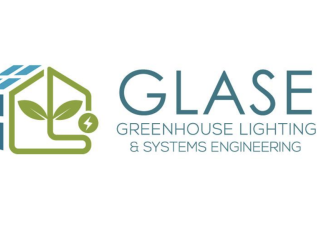Harvesting Hope: The Journey of FoodMap NY's Controlled Environment Agriculture Pilot Project

As part of our work on FoodMap NY, the Invest NYC SDG team is working to develop pilot projects in a range of sectors across New York State to address food insecurity. One of the areas we hope to explore further is controlled environment agriculture (CEA), or indoor farming, which aims to improve fresh food quality while contributing to environmental sustainability by using less land and water and fewer pesticides to grow many crops. To do so, we have been working with Cornell Greenhouse Lighting and Systems Engineering (GLASE) to model a pilot project for a CEA operation supported by a public-private partnership.
The project began in the spring of 2023, with Cornell graduate students conducting background research to provide the foundations for FoodMap NY’s CEA work. As part of the Sustainable Global Enterprise Immersion course taught by FoodMapNY co-PI Professor Mark Milstein, the students were tasked with conducting stakeholder interviews and presenting financial models to evaluate the viability of CEA in New York State with regard to addressing food insecurity.
Professor Neil Mattson, director of Cornell’s CEA program, took over the project in June and has identified New York’s North Country as the target location for a CEA pilot project. This region was chosen due to its rural location, which has a similar rate of food insecurity (12%) as the average U.S. rate of food insecurity (12.8%), making it a relevant test case. It also presents unique challenges around reliable transportation and food access that CEA could help alleviate, as larger supermarkets are often far from remote towns and villages. CEA has a unique opportunity to address these issues by producing food within these communities and introducing novel food distribution models. Two of our model’s objectives are to utilize land and energy incentives to reduce CEA facility costs, and to improve distribution and marketing to reach those who did not know about or have access to CEA produce before.
Since June, the team has contacted over 16 relevant stakeholders for interviews to get a better understanding of how specifically to support the North Country. Neil emphasized finding different segments to talk with during this outreach to ensure a holistic approach, ranging from private CEA companies and greenhouses to public cooperatives, non-profits, and food banks. From the existing CEA operations in the region, we learned that they are primarily engaged in two practices. They either facilitate the transportation of produce to the market by supplying retailers and supermarkets or directly sell their products at farmers’ markets and restaurants. Despite being able to grow year-round, their operations are generally more seasonal due to foot traffic patterns.
The work so far has found that there are already examples of CEA-related innovation in the North Country, such as incorporating automated growing systems to reduce the hard labor typically involved in agriculture. Another model being explored is accessing affordable hydroelectric power to address energy (which is typically the second highest input cost in year-round greenhouse production). However, the predominant challenge remains: creating a strategy to make CEA produce more affordable (in line with field-grown products produced out of state) and accessible for a wider segment of the population, rather than catering exclusively to a niche market such as farmers’ markets or restaurants. A common theme that has emerged from conversations with CEA operators is the need for significant initial capital investment, with CEA operators actively seeking investors to support their ventures.
Discussions with the industry have also highlighted the potential benefits of economies of scale. There appears to be a minimum viable size for CEA in terms of automation and the requisite personnel, for establishing a certain scale seems imperative to justify the efficient distribution of produce within these competitive markets. All in all, the interviews have proven to be a beneficial source: several have referred other contacts that we might find helpful and 5 indicated that they would be willing to serve on a working group as the project progresses.
As of late fall, the interviews have mostly wrapped up, with the focus now shifting to finalizing the working group composition and conducting more public outreach. Ideally, the group will include additional CEA operators, finance or impact investors, a distribution-focused retailer/food bank, and the New York Power Authority (NYPA) as a utility contact. From now until March 2024, the group will convene in person and online to draft a business model for a CEA operation that includes crop types, location, technologies needed, and any distribution methods. Professor Miguel Gomez of Cornell’s Dyson College of Business will assist with economics models to determine the impact of production practices and technology adoption as well as any marketing scenarios. Throughout April and May, the plan is to refine economic models, test various scenarios, socialize the business plan with community stakeholders to collect feedback, and refine the work to date as necessary. This will culminate with an in-person meeting in June to present the final plan.
While this project focuses on developing a CEA operation, Neil has not ruled out the possibility of collaborating with other FoodMap NY projects. One avenue of exploration involves the integration of the concept of food as medicine, which could manifest through the distribution of produce boxes or the provision of produce to individuals who have been prescribed a diet rich in fruits and vegetables. Another option is to connect local CEA growers with discount retailers like gas stations or Dollar General to supply healthy produce to markets that may be in closer proximity to rural areas than supermarkets. All in all, we are pleased with the progress to date and excited about what the rest of the project could entail.
Alan Fang is a junior at NYU Stern pursuing a B.S. in Business with co-concentrations in finance and sustainable business and a second major in history.
